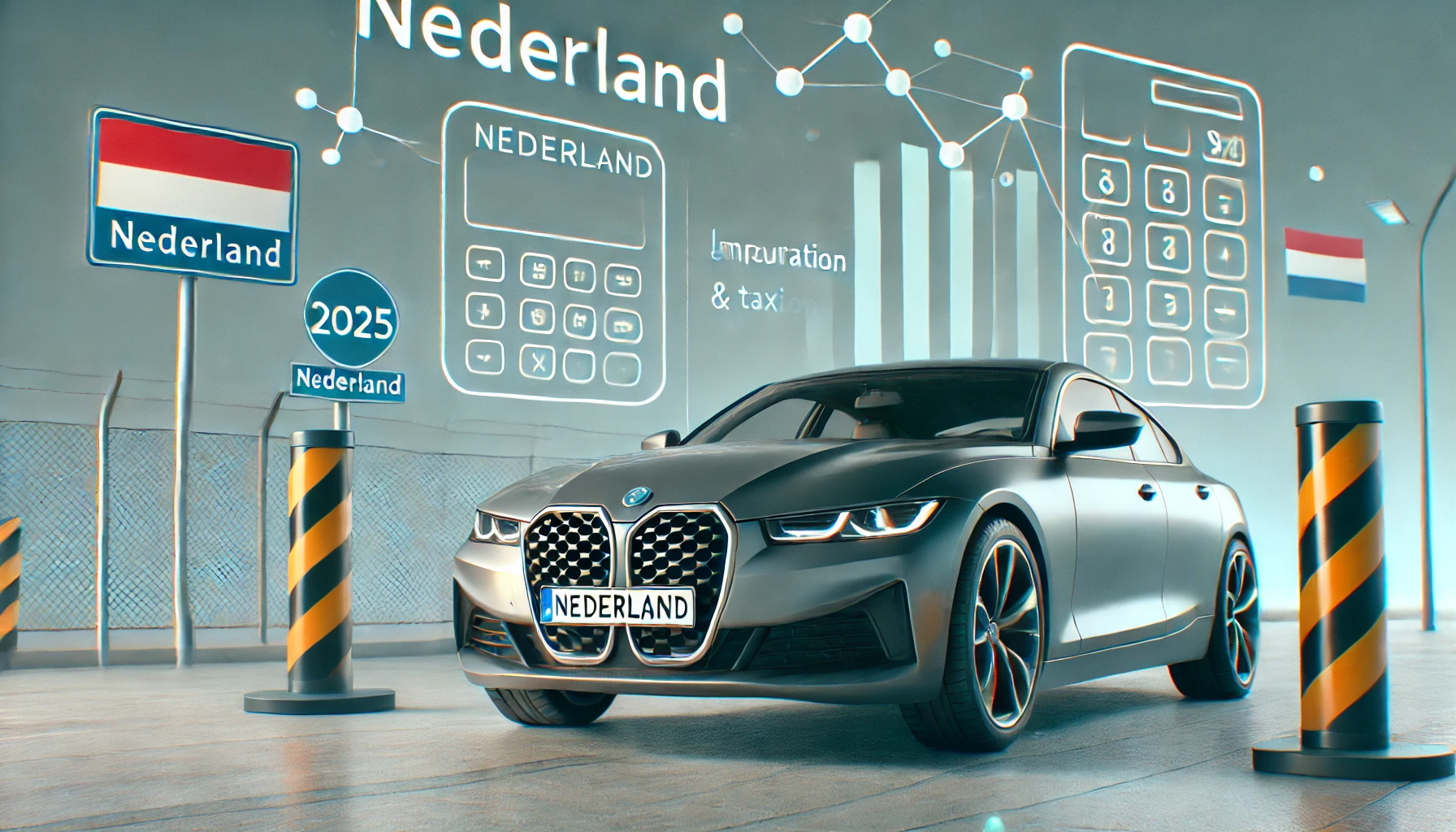How do you calculate the bpm for an import car in 2025?
What is bpm?
The letters ‘bpm’ stand for Belasting van Personenauto’s en Motorrijwielen. You pay this tax when you register a passenger car, light commercial vehicle or motorcycle in the Netherlands. So you could call it a purchase tax. The bpm is only paid by the first owner of the vehicle, so when you buy a new car or import one. If you buy a used car that is already registered in the Netherlands, you never have to pay bpm.
The bpm was introduced back in 1993. Back then it was a fixed percentage of the vehicle’s list value. The tax was meant to be a kind of “luxury tax. In 2008, the bpm system was modified. It is now primarily intended to make vehicles with high CO2 emissions less attractive. Since then, the bpm amount consists of a fixed amount (the so-called fixed base), plus a certain amount per gram of CO2 emissions of the vehicle. This is based on the official CO2 emissions of the vehicle, as determined according to the NEDC and later WLTP cycle. The amounts of the fixed foot and per gram of CO2 have increased considerably over the years.
When is an import car exempt?
When you import a car, you are registering a new vehicle in the Netherlands. Therefore, you may have to pay bpm. In some cases, a vehicle is completely exempt from bpm. This applies to the following vehicles:
- Vehicles over 40 years old
- Vehicles used temporarily in the Netherlands (by foreigners living, working or studying here temporarily)
- Vehicles for diplomatic use
Changes bpm for 2025
There were other exceptions before Jan. 1, 2025, but they have been abolished. There are more changes for the 2025 bomb, though. We list them all. Perhaps the most important change is the elimination of a number of bpm exemptions. For example, as of Jan. 1, 2025, new cars with 0 g/km CO2 emissions (read: electric cars) must also pay bpm. This is a fixed amount of 667 euros. The bpm exemption for fuel-engine light commercial vehicles will also be dropped (electric ones will remain exempt). Thereby, like passenger cars, bpm will be calculated based on official CO2 emissions, albeit with slightly different rates. However, this can still drive up the price considerably.
The expiration of the bpm exemption for these vehicles also applies to imports of vehicles that were first registered before Jan. 1, 2025. However, depending on the age of the vehicle, you can benefit from depreciation discounts on the bpm. More on that in the next section.
A smaller change are the depreciation tables based on which any residual BPM is calculated. These tables are updated annually and so the amounts have changed somewhat for 2025 as well. Again, tell more about this later in this article.
How is the bpm calculated?
For new vehicles, calculating the bpm is relatively simple. For a passenger car, a fixed bpm amount of 667 euros applies in 2025. After that, an amount is added for each gram of official CO2 emissions. This amount increases exponentially. For CO2 emissions up to 79 g/km, you pay two euros per gram. For every gram between 80 and 101 g/km, you already pay 79 euros. After that, the amounts increase significantly. For every gram above 157 g/km you pay no less than 568 euros. You understand that the total bpm amount under the line rises considerably.
When you import a vehicle, calculating the bpm is a bit more complicated. The bpm is then calculated based on the CO2 emissions, but the age of the vehicle also plays a role. Sometimes you can also choose different calculation methods. Below we try to explain these as clearly as possible.
Calculating Bpm when importing: three methods
There are three methods for calculating the bpm for an import car: the catalog value method, the price list method and the valuation method. The catalog value method applies to import cars up to three years old. These are considered “new” by the tax authorities, regardless of mileage. Therefore, the bpm is calculated in the same way as for a brand new car originally delivered to the Netherlands.
If an import vehicle is older than three years, then calculating the bpm is a bit more complicated. Basically, the price list method applies. Here the value of the vehicle is determined using a recognized price list, such as that of Autotelex or X-Ray. The bpm is still calculated based on the official CO2 emissions of the vehicle. However, you can then use the depreciation percentage as a discount on this calculated bpm amount.
An alternative method is the appraisal method. In this, a licensed appraiser establishes the value of the vehicle. This value is then used in the same way as the price list method. The appraisal method is especially interesting for vehicles with damage and rare vehicles, in short, when the actual value is probably lower than the price list indicates or when the vehicle does not appear in the price list.
If the import vehicle is older than three years, you may choose the method you use to calculate the bpm.
Opting for an older bpm rate
There is another bpm advantage to be gained. This is because you may calculate the bpm using older rates, choosing from the rates that applied in the year your vehicle was first registered internationally up to and including the current rates. Thereby, the older rates are always more advantageous, so in practice you always choose the rates from the first possible year.
Determining CO2 emissions
The bpm is therefore calculated for both new and older imported vehicles based on the official CO2 emissions of the vehicle. This can be found in the European type approval. If a vehicle does not have this, for example because it is imported from outside the EU, then the value of the type approval for the region of origin applies. If there is neither, the CO2 emissions must be determined in an approved manner. For the exact requirements, see the Tax Office website.
You can also choose not to register any CO2 emissions at all. In that case, however, the Tax Office assumes very high CO2 emissions. Depending on the year of manufacture of the vehicle, this goes up to 330 g/km for light commercial vehicles, 395 g/km for a diesel car and even 550 g/km for a gasoline-powered car. The actual CO2 emissions are often much lower, so it’s better to have them officially determined.
Bpm calculator
As you can see, calculating the bpm for an import car is not always easy. That is why several import companies, as well as independent parties such as the aforementioned X-Ray, offer a bpm calculator. You then enter the vehicle’s details and easily see how much bpm you owe upon import.

